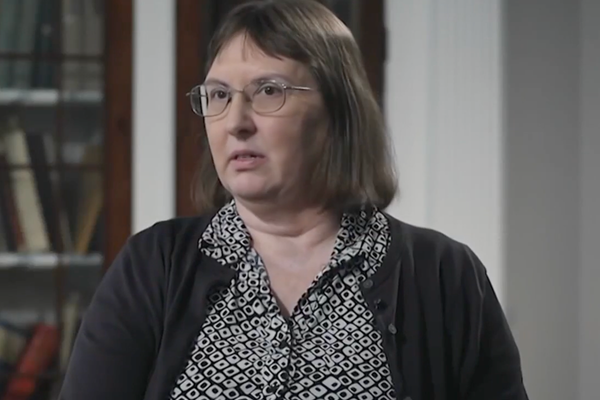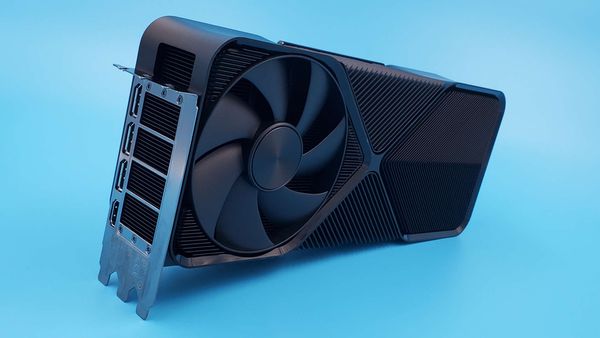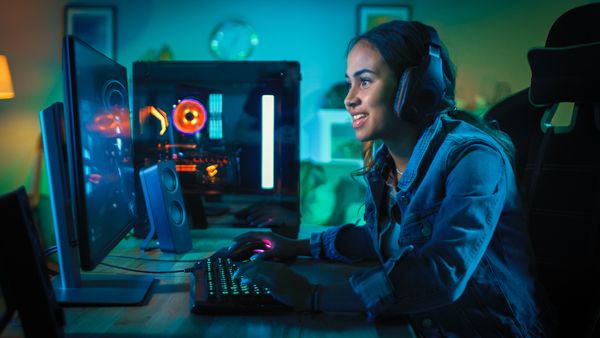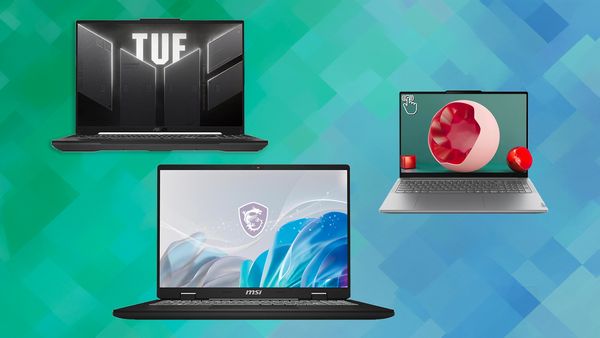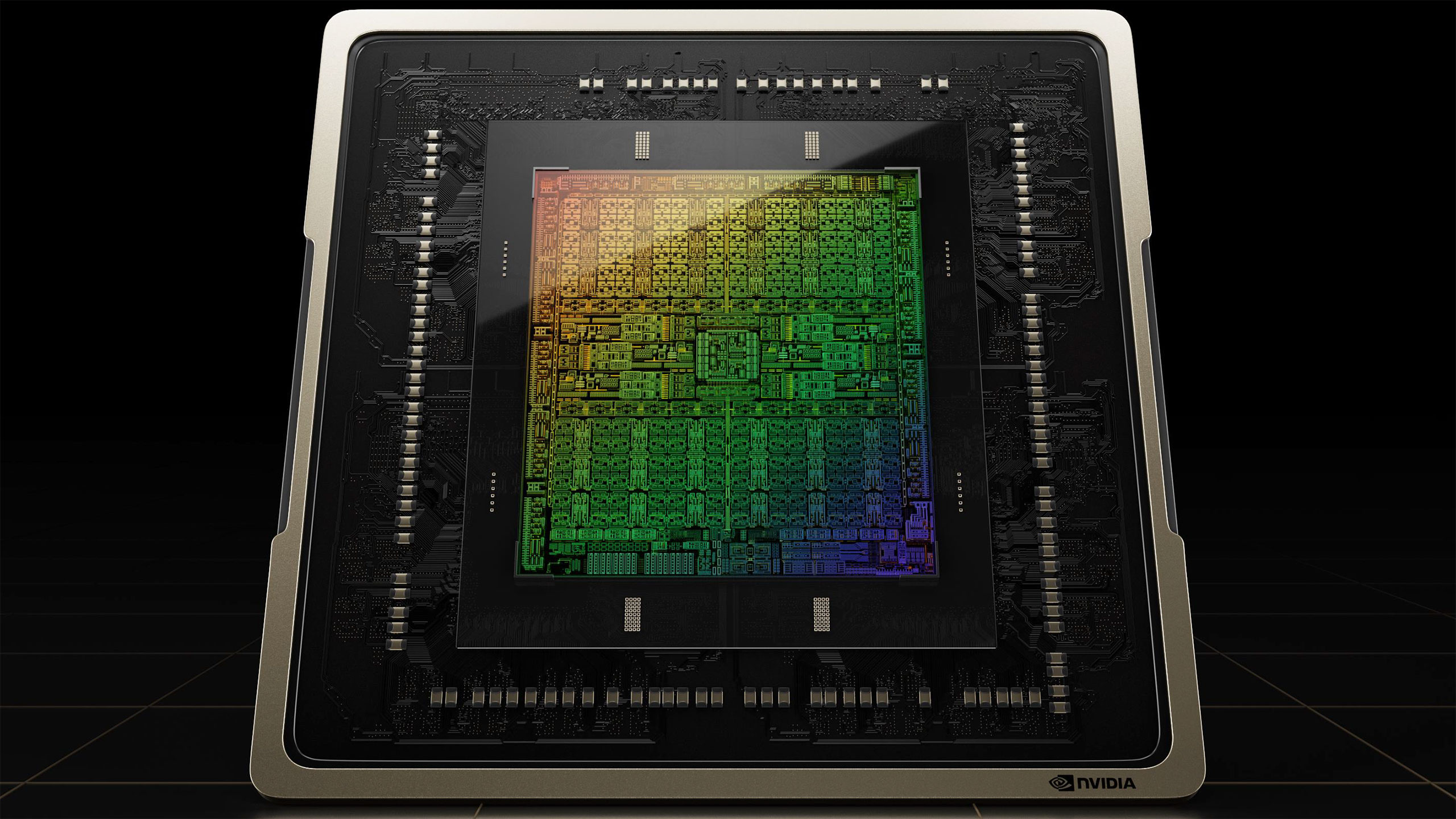
Inno3D's press release for CES 2025 includes a few teasers for the AIB's next-gen RTX 50 offerings next month and hints at a potential DLSS 4. The marketing material is extraordinarily vague and could be interpreted in many ways. However, Inno3D's unique emphasis on AI and choice of words lead us to believe that Nvidia has something on the horizon. Only time will tell.
Board partners have very likely finalized their SKUs for next month, and it's only a matter of time before we see them put into action. According to a leak from Zotac, Nvidia is set to announce the RTX 5090, RTX 5080, and RTX 5070 family next month. In case any new features were added, say a potential DLSS 4, AIBs are probably aware, as the same information goes on the GPU box art.
Inno3D reports that it will detail new features such as an "Advanced" DLSS, which offers higher FPS and better visuals. Then, the company mentions "Neural Rendering Capabilities," which will quote-unquote "revolutionize how graphics are processed and displayed." Afterward, AI-enhanced power delivery appears to be a partner-specific feature, likely a gimmick or a genuinely new technology; who knows? Generative AI isn't unheard of, but that should also improve with Blackwell owing to the architectural revamps.
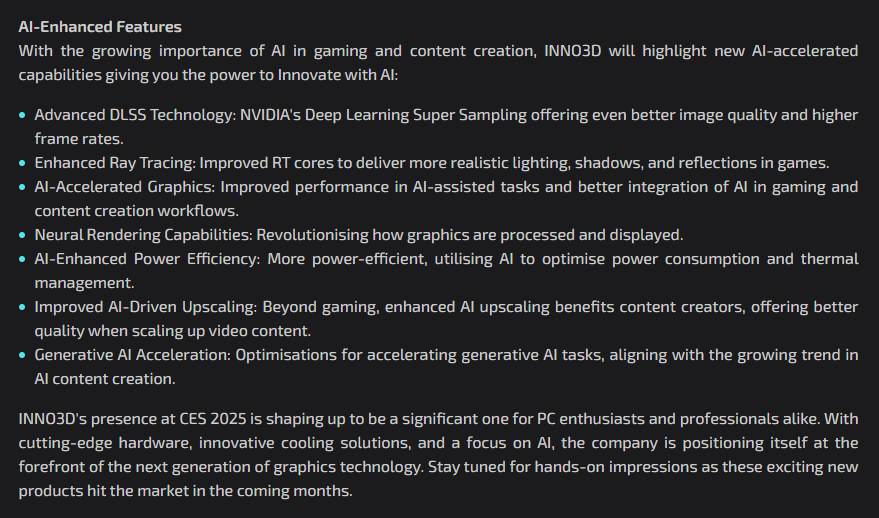
Inno3D claims that its offerings will have better AI integration in games. This suddenly comes to mind when Nvidia unveiled G-Assist at Computex last year, which was nothing more than an April Fools' prank just a few years past.
The press release asserts these features are "new. " To be fair, Nvidia has teased something of the sort in the past. DLSS 3 can generate frames between frames, but what about generating entire in-game assets from scratch? Moreover, Jensen also discussed AI-generated in-game NPCs, each with a unique dialogue and voice; see Nvidia ACE for more context.
The "Neural Rendering Capabilities" part could also be a teaser for the long-awaited NTC (Neural Texture Compression) tech the firm revealed last year. NTC employs neural networks to compress textures more efficiently than traditional methods, allowing higher-resolution textures with similar storage requirements. Since NTC decompression leverages matrix multiplication, it should run on practically any modern-day GPU from Nvidia. This should alleviate Nvidia's 8GB memory bottleneck to some extent and might even benefit older architectures, but the final decision rests on Nvidia.
AMD will also reveal RDNA 4 with some new AI features next month, so it is best to wait until January to see the whole picture.





